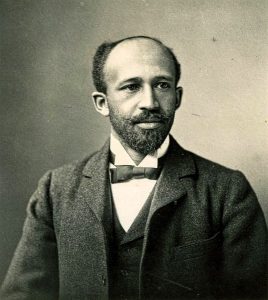As of the presidential election of 2008, the US has now had an African American President – for eight years. When Barack Obama was first elected, there was speculation, even hope, that the US might finally be entering a time of reduced racism. Of course, many others among us realized that merely the election of a black man was only a first step toward racial equality – but there was still an exhilaration among a certain segment of our citizenry that people of color, especially children, would now have a role model to follow and emulate. 
Lurking behind our nation’s pervasive problem of race, racism and racial inequality is our history of slavery, primarily the centuries-long enslavement of African peoples. Since slavery was officially outlawed in the US by the 13th Amendment to the Constitution in late 1865, and “all persons born or naturalized in the United States” were granted citizenship by the 14th Amendment of 1868, our nation is now more than a century and a half removed from bondage as a viable institution. It can reasonably be argued, at some level, that slavery is a thing of the past, with little or no impact on our current lives. Yes, we still have racial problems – and we’ve had the Jim Crow era, the fight for Civil Rights in the 1960s, and the modern Black Lives Matter movement stemming from the killing of unarmed black men by police officers. But the link with our history of slavery is rarely mentioned or admitted – perhaps due to our national pride and general desire to move past our national shortcomings. Students may study these historical moments in a few lessons in schools (and some schools do better with them than others), but overall in our nation, the long-term results of the enslavement of a whole group of people are poorly acknowledged.
Why is this important? A recent examination of slavery, what Americans know about it, and its negative long-term effects lays out its importance – to all Americans, not just to blacks themselves. As the report, by the Southern Poverty Law Center (SPLC), notes, “American enslavement of Africans shaped our country’s sociopolitical institutions and formed the cornerstone of our industrial revolution. Today the persistent disparities African Americans face — and the backlash that seems to follow every African-American advancement — trace their roots to slavery and its aftermath.”
How can this be? How can an institution that ended 150 plus years ago really be that significant today?
 First of all, schools are not teaching slavery at all adequately (acknowledging, of course, that our schools today are dealing with many pressures and challenges). Therefore, by the time seniors graduate, they are sorely lacking in facts about American slavery. In a quiz administered in December 2016 to 1,000 high school seniors, 20 questions were asked, and the results were demoralizing. “In no case did more than 67 percent of students identify the correct answer to a given question.” Further, “only 8 percent of high school seniors can identify slavery as the cause of the Civil War,” and “[o]nly 32 percent of students correctly identified the 13th Amendment as the formal end to slavery in the United States” (35 percent incorrectly believed that slavery was ended by the Emancipation Proclamation).
First of all, schools are not teaching slavery at all adequately (acknowledging, of course, that our schools today are dealing with many pressures and challenges). Therefore, by the time seniors graduate, they are sorely lacking in facts about American slavery. In a quiz administered in December 2016 to 1,000 high school seniors, 20 questions were asked, and the results were demoralizing. “In no case did more than 67 percent of students identify the correct answer to a given question.” Further, “only 8 percent of high school seniors can identify slavery as the cause of the Civil War,” and “[o]nly 32 percent of students correctly identified the 13th Amendment as the formal end to slavery in the United States” (35 percent incorrectly believed that slavery was ended by the Emancipation Proclamation).
Second, “[p]opular textbooks fail to comprehensively cover slavery and enslaved peoples.” This inadequacy, of course, influences what is taught in the schools and how subjects are taught, even though teachers often supplement textbook information with their own materials. The SPLC study listed 10 Key Concepts of slavery and evaluated teachers, students and textbooks against these Key Concepts:
- Slavery, which predated European settlement, was important to all of the colonial powers and existed in all of the European North American colonies.
- Slavery and the slave trader were central to the development and growth of the economy across British North America and later, the United States.
- Protections for slavery were embedded in the founding documents; enslavers dominated the federal government, the U.S. Supreme Court, and the U.S. Senate from 1787 through 1860.
- “Slavery was an institution of power,” designed to create profit for the slaveholder and break the will of the enslaved and was a relentless quest for profit abetted by racism.
- Enslaved people resisted the efforts of their enslavers to reduce them to commodities in both revolutionary and everyday ways.
- The experience of slavery varied, depending on time, location, crop, labor performed, size of slaveholding, and gender.
- Slavery was the central cause of the Civil War.
- Slavery shaped the fundamental beliefs of Americans about race, and whiteness and white supremacy was both a product of, and legacy of, slavery.
- Enslaved and free people of African descent had a profound impact on American culture, producing leaders, and literary, artistic, and folk traditions, etc., that continue to influence the nation.
- By knowing how to read and interpret the sources that tell the story of American slavery, we gain insight into some of what enslaving and enslaved Americans created, thought, aspired to, and desired.
Third, according to the SPLC report, with some exceptions, “[s]tate content standards are timid and fail to set appropriately high expectations.” The report analyzed a number of states’ content standards through “formal standards and supporting documents called frameworks” and noted for each which of the 10 Key Concepts were judged to be missing. States through their legislatures, for whatever reason, in general fail to set appropriately high expectations for teaching about slavery.
 In 1903, WEB Du Bois published The Souls of Black Folk. When read in this American context over one hundred years later, one gets the disturbing sense that little has changed. Arguing about the importance of education, Du Bois explains some of what took place during Reconstruction and subsequent years, which had significant long-term effects that we can still see today:
In 1903, WEB Du Bois published The Souls of Black Folk. When read in this American context over one hundred years later, one gets the disturbing sense that little has changed. Arguing about the importance of education, Du Bois explains some of what took place during Reconstruction and subsequent years, which had significant long-term effects that we can still see today:
“In rough approximation we may point out four varying decades of work in Southern education since the Civil War. From the close of the war until 1876, was the period of uncertain groping and temporary relief. There were army schools, mission schools, and schools of the Freedman’s Bureau in chaotic disarrangement seeking system and cooperation. Then followed ten years of constructive definite effort toward the building of complete school systems in the South. Normal schools and colleges were founded for the freedmen, and teachers trained there to man the public schools. There was the inevitable tendency of war to underestimate the prejudices of the master and the ignorance of the slave, and all seemed clear sailing out of the wreckage of the storm. Meantime, starting in this decade yet especially developing from 1885 to 1895, began the industrial revolution of the South. The land saw glimpses of a new destiny and the stirring of new ideals. The educational system striving to complete itself saw new obstacles and a field of work ever broader and deeper. The Negro colleges, hurriedly founded, were inadequately equipped, illogically distributed, and of varying efficiency and grade; the normal and high schools were doing little more than common-school work, and the common schools were training but a third of the children who ought to be in them, and training these too often poorly. At the same time the white South, by reason of its sudden conversion from the slavery ideal, by so much the more became set and strengthened in its racial prejudice, and crystallized it into harsh law and harsher custom; while the marvelous pushing forward of the poor white daily threatened to take even bread and butter from the mouths of the heavily handicapped sons of the freedmen. In the midst, then, of the larger problem of Negro education sprang up the more practical question of work, the inevitable economic quandary that faces a people in the transition from slavery to freedom, and especially those who make that change amid hate and prejudice, lawlessness and ruthless competition.” (Souls of Black Folk , pages 77-78)
These observations are worth quoting in full because they cover so much territory – and so presciently. If we in the US can agree that education is vitally important to the ideal functioning of a democratic republic like ours, then we not only need to ensure that all American children learn the basics of slavery but also that descendants of the enslaved have every opportunity to take advantage of the best education we can offer at all levels. The SPLC report cited here points to the shortcomings of what our children know about slavery; despite several decades of affirmative action to even the playing field in education, the workplace, the military and so on, national statistics show that African Americans still have a long way to go before true equality with whites.
A final lesson from the SPLC report on how slavery is taught: “One thing that we know about history education is that making connections to the present ensures that students are more likely to recall the material. Another thing we know is that acknowledging injustice engages students. Our interest in education about slavery isn’t just about good history education. We are convinced that students cannot fully understand the current state of race relations in the United States if they do not understand the history and extent of American slavery. The ninth Key Concept speaks to the need to make connections to the present: ‘Enslaved and free people of African descent had a profound impact on American culture, producing leaders, and literary, artistic and folk traditions, etc., that continue to influence the nation.’”
It is incumbent upon us all – especially those of us who enjoy white privilege – not only to acknowledge the problems and challenges we all face but also to work to confront and resolve them. In many ways, we have come far – so we can come even farther as a nation if we have the collective will to do so.
For Further Reading
Du Bois, William Edward Burghardt. The Souls of Black Folk. New York and London: Penguin Books, 1989 (first published A.C. McClurg & Company 1903).
